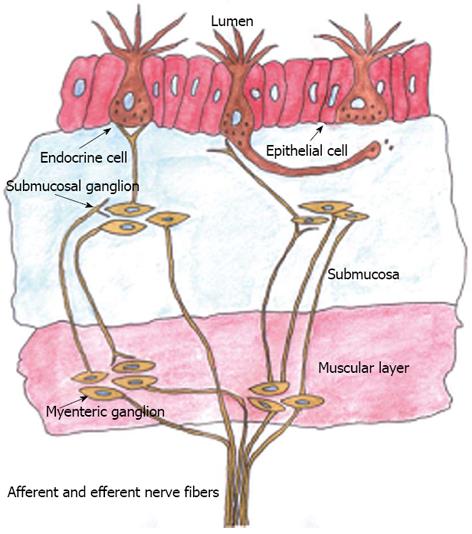Copyright
©2014 Baishideng Publishing Group Co.
World J Gastroenterol. Jan 14, 2014; 20(2): 384-400
Published online Jan 14, 2014. doi: 10.3748/wjg.v20.i2.384
Published online Jan 14, 2014. doi: 10.3748/wjg.v20.i2.384
Figure 1 Schematic illustration of the gut neuroendocrine regulatory system.
The endocrine cells are scattered among the epithelial cells and have specialized microvilli that project into the lumen and function as sensors of the gut contents, and they respond to luminal stimuli by releasing hormones into the lamina propria, where they exert their action locally on nearby structures. These endocrine cells interact with the enteric nervous system, which is in turn connected to and modulated by the central nervous system through afferent and efferent nerves.
- Citation: El-Salhy M, Gundersen D, Gilja OH, Hatlebakk JG, Hausken T. Is irritable bowel syndrome an organic disorder? World J Gastroenterol 2014; 20(2): 384-400
- URL: https://www.wjgnet.com/1007-9327/full/v20/i2/384.htm
- DOI: https://dx.doi.org/10.3748/wjg.v20.i2.384









